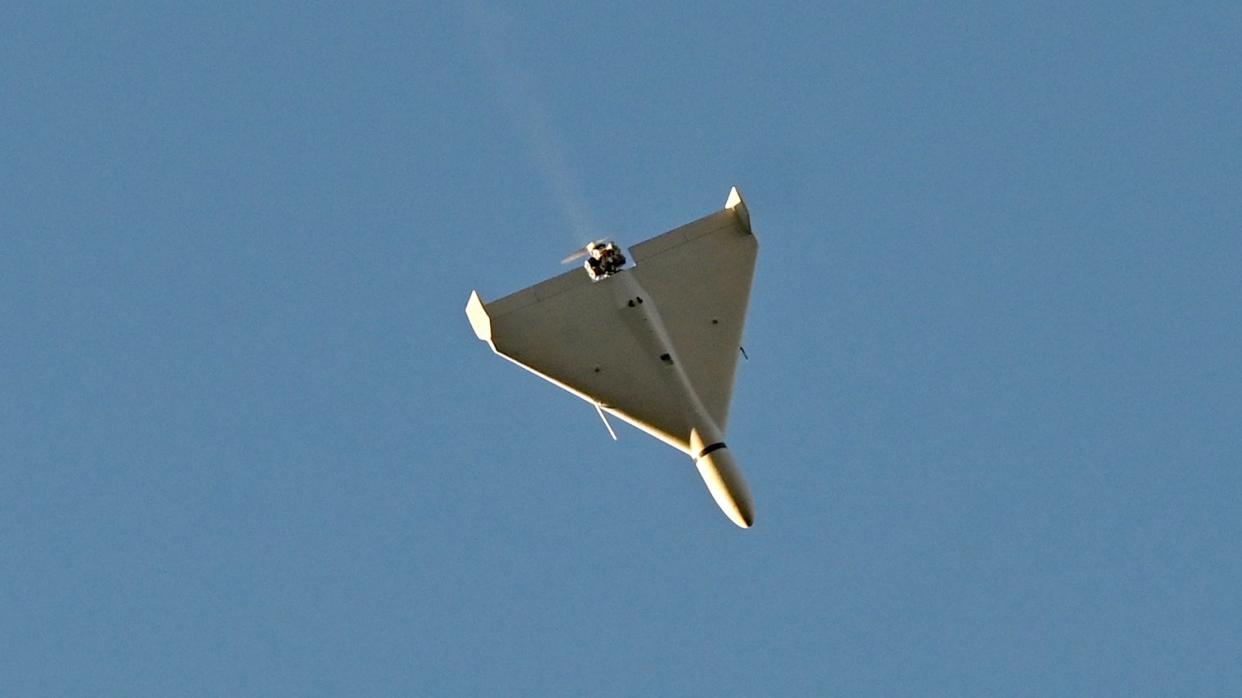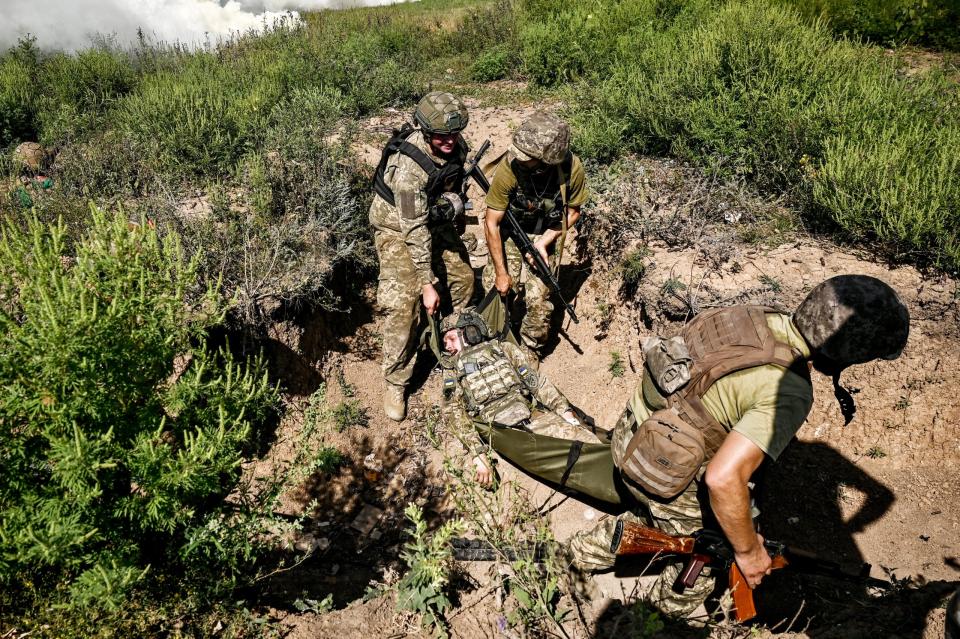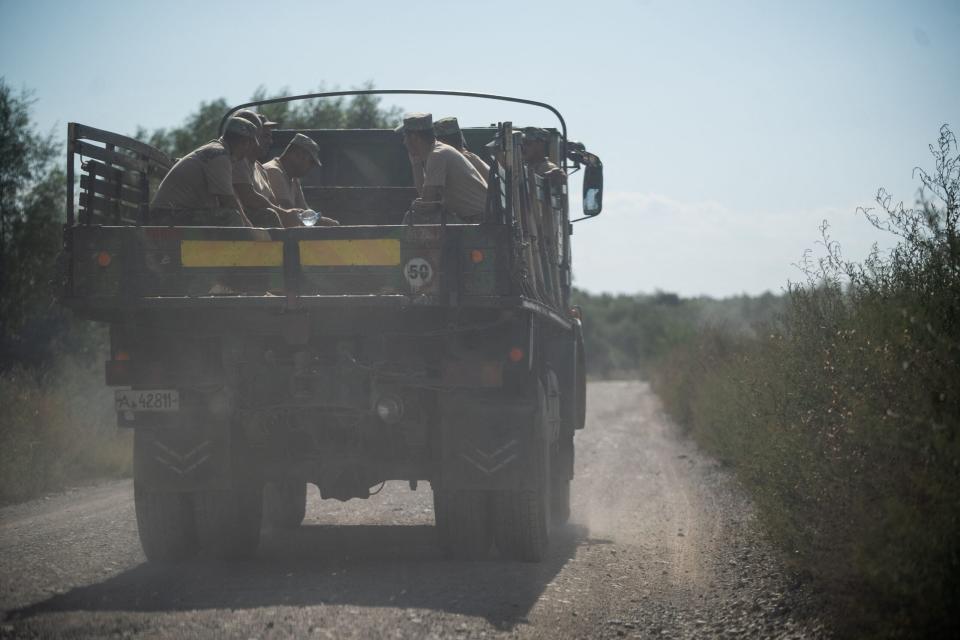Ukraine Situation Report: Kyiv Braced For Unprecedented Winter Drone War

As winter draws closer, Ukraine is preparing for an even fiercer Russian drone offensive than that which was launched against its cities and infrastructure last year. The Russian drone attacks, which make particularly heavy use of Iranian-designed Shahed-series drones, have already stepped up considerably in recent weeks, Ukrainian officials say.
According to Yuriy Ihnat, a spokesperson for the Ukrainian Air Force, attacks by Russian ‘suicide drones’ are expected to reach a record number this winter. Ihnat was speaking on Ukrainian national television, his remarks subsequently being reported by Reuters.
The country’s energy infrastructure is, once again, expected to be the main target of drone strikes, repeating Russian tactics from last winter, which left millions of Ukrainians without power. Repairs to the energy infrastructure are still ongoing as of now, and grid operators have been imposing regular rolling power cuts and rationing of hot water.

Looking at data for September, Ihnat said more than 500 drones were launched against Ukraine in that month, a new record in itself. By comparison, Russia used around 1,000 Shahed drones across a sixth-month period last winter.
Ukraine is preparing for the new offensive having received new Western-made air defense equipment, but still has nowhere near enough hardware of this kind to ensure coverage of all potential energy targets. At the same time, there is a demand for certain ground-based air defense systems to be used to protect Ukrainian troops taking part in the counteroffensive in the east and south of the country, putting a further strain on these critical weapons and forcing the use of emergency solutions against drone strikes, including small-arms fire.
https://www.twitter.com/Osinttechnical/status/1709300267303223759?s=20
F-16 fighters promised by Ukraine’s allies have still not arrived, and the jets currently operated by the Ukrainian Air Force are hardly well-suited to the job of intercepting low-level, slow-flying drones, as we have reported about in the past.
It is no surprise, therefore, that air defense systems were stated as Kyiv’s priority during the visit to Washington by Ukrainian President Volodymyr Zelensky last month.
Today’s intelligence briefing from the U.K. Ministry of Defense also reflected on the ongoing drone war and, in particular, Russia’s increasing reliance on Iran in this regard.
The U.K. Ministry of Defense claims that “international isolation has forced Russia to redirect its foreign policy efforts towards previously less-desirable partnerships to gain diplomatic, economic, and military support,” before noting that Russia is now producing Iranian-designed drones under license.
https://www.twitter.com/DefenceHQ/status/1711257812360118707?s=20
Before we head into the latest from Ukraine, The War Zone readers can catch up on our previous rolling coverage here.
The Latest
While Russia continues its drone war against Ukraine, Kyiv meanwhile appears to be continuing its campaign against targets in Russia-occupied Crimea. This complex campaign has involved a wide range of weapons and tactics, including drones, long-range missiles, unmanned surface vessels, and sabotage teams. Among the more unusual weapons employed against Crimea are adapted Cold War-era S-200 long-range surface-to-air missiles, known to NATO as SA-5 Gammon.
According to Russian accounts, two such missiles, modified to attack static ground targets, were successfully intercepted by air defenses in Crimea over the weekend.
https://www.twitter.com/NOELreports/status/1710761617388933482?s=20
The Russian Ministry of Defense claimed that its air defense systems “detected and destroyed” two Ukrainian S-200s that were fired against Crimea in a space of four hours on Saturday. On the Telegram messaging app, the defense ministry posted near-identical statements at around 6:00 p.m. and 10:00 p.m. Moscow time. These claimed that Kyiv “attempted a terrorist attack” and that the S-200 missile was in each case destroyed in the air.
While these claims cannot be independently confirmed, Ukraine’s national public broadcaster, Suspilne, quoted a resident of Yevtaporiya in the west of Crimea as saying that two explosions were heard around 10:25 p.m. Moscow time. There were also photos showing a column of smoke rising over Dzhankoi, home of a Russian military base in the north of Crimea, and further reports of explosions being heard there.
https://www.twitter.com/Archer83Able/status/1708892201584095506?s=20
In the last few weeks, Ukrainian strikes against Crimea have targeted high-profile objectives such as the dry dock at the naval port of Sevastopol that contained a submarine and amphibious landing ship as well as S-400 air defense systems, also on the peninsula.
On the battlefield, Ukraine claims that its armed forces repelled a Russian attack in Novoprokopivkain the Zaporizhzhia region in the south of the country, while also stating that its troops had “partial success” in nearby Verbove. These claims were reported by Suspilne, quoting the general staff of the Ukrainian Armed Forces.
https://www.twitter.com/TheStudyofWar/status/1711207353553698938?s=20
While the ongoing Ukrainian counteroffensive has faced criticism for its slow progress against entrenched Russian positions in the east and south of the country, a recent intelligence briefing from the U.K. Ministry of Defense claims that Ukraine “almost certainly liberated at least 125 square kilometers [ square miles] of territory” in one eastern area of the country. The area in question is the Velyka Novosilka sector west of the town of Vuhledar in Donetsk oblast. As a result, the area has “become relatively quiet over the last four weeks” the U.K. Ministry of Defense added.
https://www.twitter.com/DefenceHQ/status/1710893366387310836?s=20
From Russia, meanwhile, there have been claims that five separate attacks by the Ukrainian Armed Forces have been successfully thwarted. The claims originated from the media officer responsible for Russia’s Central Group of Troops, located in occupied Luhansk. The Ukrainian attacks are said to have been defeated near Lyman and Torske, with 50 Ukrainian troops being killed in the process. These claims have not been independently verified.
Ukraine has removed the commander of its Territorial Defense Forces, Gen. Ihor Tantsyura, for reasons that remain unclear.
In a presidential order today, Ukrainian President Zelenskiy announced the appointment of Maj. Gen. Anatoliy Barhylevych as the new commander of the Territorial Defense Forces.
Gen. Tantsyura had been in the post since May 2022, presiding over the Territorial Defense Forces as they played an important role in repelling the Russian invasion.
Battle-hardened Barhylevych comes to the job having previously served as the chief of staff of the Ukrainian Armed Forces in the east of the country, which has seen most of the heaviest fighting.
https://www.twitter.com/Flash_news_ua/status/1711341471872295192?s=20
While primarily the military reserve component of the armed forces, the Territorial Defense Forces also have other more specialized functions, alongside defense of critical infrastructure, force protection, and security. For example, their units are also trained to combat Russian sabotage trams and intelligence forces that might be operating on Ukrainian territory.
The changeover at the top of the Territorial Defense Forces comes a month after Zelenskiy appointed a new defense minister. Rustem Umerov took over from Oleksii Reznikov, who was fired as his ministry came under fire from corruption allegations.

More new variations of extemporized anti-drone measures have appeared on Ukrainian and Russian tanks of late, as the two tweets below indicate.
First up is the news, reported by the press service of Metinvest, that the Ukrainian company is now supplying Ukrainian units with bespoke metal structures for protection against Russian attack drones.
According to a statement, the company is undertaking serial production, making up to five units per week, with 32 sets of these protective structures already having been handed over to the military. Based on the supplied photos and artwork, these extensive coverings are intended to protect the vehicles when stationary or in dug-in combat positions, when they are at their most vulnerable.
https://www.twitter.com/mil_in_ua/status/1711377354084290591?s=20
Next up, however, is a similar-looking protective ‘cope cage’ that was seen on a Russian tank in recently emerged footage. Like the Ukrainian structure, it is an enormous structure that covers the entire tank, constructed from a combination of metal grids and netting, although it’s clearly designed for protecting a tank on the move.
https://www.twitter.com/AndreiBtvt/status/1710965294158475646?s=20
Reflecting the growing strategic importance of Romania in the conflict, Ukrainian President Zelenskiy has announced that this NATO country will host his next visit. Zelenskiy is due in Romania tomorrow.
On the agenda will surely be the issue of grain exports via Romania. Since Russia pulled out of a deal that ensured safe passage of Ukrainian grain from Ukrainian Black Sea ports, Romania has become vitally important to Kyiv’s economy. Now, the Romanian Black Sea port of Constanța has become Kyiv’s main alternative export route for grain.
In the process, this has brought the war closer to Romania, with Russia targeting Ukrainian ports on the Danube River, from where grain is transported to Romania for onward shipment. On several occasions, fragments of Russian drones have landed on Romanian territory, to the alarm of local officials. In response, the Romanian military has increased patrols and observation posts and has expanded a no-fly zone along part of its border with Ukraine.

In an interesting development in Sweden, a Russian-Swedish citizen is now awaiting trial, accused of conducting “unlawful intelligence activities” on behalf of Moscow. A court in Stockholm will make a verdict in the case of Sergei Skvortsov later this month. He is accused of passing Western technology to Russia and has been released from custody, awaiting his trial. Skvortsov was arrested at his Stockholm home in November last year.
If found guilty, Skvortsov could be imprisoned for up to five years.
https://www.twitter.com/RFERL/status/1698587195337040080?s=20
While the 60-year-old is accused of having conducted his activities against Sweden and the United States over a 10-year period, the issue of intelligence activities directed by or on behalf of Russia, against the West, has taken on a greater significance since the full-scale invasion of Ukraine. Sanctions imposed on Russia have, in particular, restricted the country’s ability to resupply its forces, especially with high-tech weapons and equipment incorporating Western electronics and other advanced items.
Skvortsov is now alleged to have been a “procurement agent” for a vast Russian intelligence network that was tasked with acquiring technology that had become off-limits to Moscow due to sanctions.
As fighting rages in the latest outbreak of hostilities between Israel and Hamas, as you can read about here, Ukraine’s President Zelensky has drawn a comparison between the situation in Israel and in his country.
Speaking via a video link at the NATO parliamentary assembly, Zelensky described Russia as a “terrorist state,” likening it to the “terrorist organization” Hamas and saying that they employed similar tactics. Zelensky provided the following set of definitions of terrorism:
“Do not rape women. Do not kill. Do not consider children as trophies. Do not fill villages and towns with blood. Do not shoot civilians in cars.”
https://www.twitter.com/RFERL/status/1711368511866499112?s=20
“This is not the time to withdraw from the international arena into internal disputes. This is not the time to stay silent,” Zelensky continued, in words that were very likely aimed at Republicans in the U.S. Congress who are threatening to block additional aid packages for Ukraine.
Zelensky also drew a parallel between the two conflicts in regard to Iranian involvement.
Iran “can’t say it has nothing to do with what is going in Ukraine” if it sells Shahed drones to Russia, Zelensky argued. At the same time, Tehran cannot claim “it has nothing to do with what is going in Israel” if its own officials claim to support Hamas.
That’s it for now. We’ll update this story when there’s more news to report about Ukraine.
Contact the author: Thomas@thedrive.com

